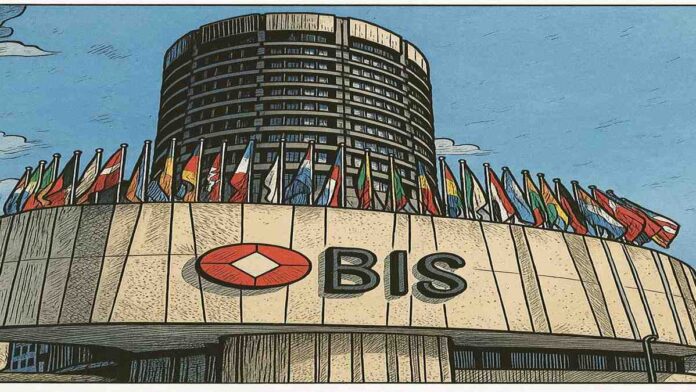The Bank for International Settlements (BIS) unveiled its 14th Triennial Central Bank Survey in September 2025, offering an in-depth analysis of over-the-counter (OTC) foreign exchange (FX) and interest rate derivatives (IRD) markets. Coordinated by the BIS under the Markets Committee for FX and the Committee on the Global Financial System for IRD, this survey—conducted every three years since 1986 for FX and 1995 for IRD—gathers data from over 1,100 reporting dealers across 52 jurisdictions. The 2025 edition, focusing on April turnover, captures a period of elevated volatility triggered by major trade policy announcements, providing critical insights into market evolution, risk management practices, and global financial interconnectedness.
Unlike more frequent regional surveys, the Triennial provides a global, standardized view, adjusted for double-counting on a “net-net” basis (eliminating local and cross-border inter-dealer overlaps). This ensures comparability across cycles, highlighting structural shifts amid post-pandemic recovery, inflationary pressures, and geopolitical tensions. The data, subject to revisions, will be further analyzed in the BIS Quarterly Review in December 2025, with outstanding amounts from June 2025 released in November.
Methodology and Scope: A Global Snapshot
The survey’s FX part tracks spot transactions, outright forwards, FX swaps, currency swaps, and options, while IRD covers forward rate agreements (FRAs), swaps (including overnight index swaps or OIS), and options. Turnover is reported by sales desks on an unconsolidated basis, capturing $9.6 trillion daily in FX and $7.9 trillion in IRD for April 2025. This represents unadjusted gross values before netting, emphasizing actual trading activity rather than net exposures.
Participation spanned major financial hubs, with the UK, US, Singapore, and Hong Kong SAR dominating 75% of FX volumes. The survey’s strength lies in its granularity: breakdowns by instrument, currency, counterparty (e.g., reporting dealers, other financial institutions, non-financials), and geography reveal how markets adapt to economic cycles.
Surging OTC Foreign Exchange Turnover: $9.6 Trillion Daily Milestone
Global OTC FX turnover hit a record $9.6 trillion per day in April 2025, up 28% from $7.5 trillion in 2022 and surpassing the 14% growth from 2019–2022. This acceleration, amid US tariff announcements sparking volatility, underscores heightened hedging and speculation. Adjusted for exchange rate changes, growth was even stronger at constant rates.
Breakdown by Instrument: Spot and Forwards Drive Expansion
Instrument preferences shifted toward shorter-term tools:
- Spot Trades: Averaged $3 trillion daily (31% share, up from 28%), a 42% increase, reflecting immediate liquidity needs amid volatility.
- Outright Forwards: Surged 60% to $1.8 trillion (19% share, from 15%), used for locking future rates, highlighting proactive hedging.
- FX Swaps: Grew modestly by 5% to $4 trillion (42% share, down from 51%), remaining key for funding and risk management but losing relative ground.
- Options: More than doubled to $0.7 trillion (7% share, from 4%), signaling speculative plays on currency swings.
- Currency Swaps: Stable at 2%, focused on longer-term exposures.
This mix illustrates a market tilting toward agility, with spot and forwards comprising 50% of turnover versus 43% in 2022.
Currency Dynamics: USD Dominance Persists, EM Currencies Rise
The US dollar remained the vehicle currency in 89.2% of trades (up from 88.4%), reinforcing its global role. The euro’s share dipped to 28.9% (from 30.6%), yen held at 16.8%, and sterling fell sharply to 10.2% (from 12.9%). Emerging market (EM) currencies gained traction:
- Chinese renminbi (CNY) climbed to 8.5% (from 7%), continuing its ascent since 2013.
- Swiss franc (CHF) rose to 6.4% (from 5.2%), entering the top six.
- Hong Kong dollar (HKD) rebounded to 3.8% (from 2.6%).
Top pairs, all USD-linked, saw USD/CNY (8.1% share, +59% growth), USD/CHF (+60%), and USD/HKD (+95%) surge, driven by trade tensions and policy shifts.
Counterparty Trends: Non-Banks Take Center Stage
Inter-dealer trading steadied at 46% (from 47%), while “other financial institutions” (non-reporting banks, institutional investors, hedge funds) rose to 50% (from 47%), with $4.8 trillion daily—up 35%. Non-reporting banks led at 24%, institutional investors at 13% (up from 11%), and hedge funds/PTFs at 8%. Non-financial customers declined to 5%, possibly shifting via financial arms.
This evolution points to broader market access, with non-banks driving 72% growth in forwards and 50% in spot, likely for hedging amid volatility.
Geographical Concentration: Asia Gains Ground
The top four hubs—UK (46%), US (24%), Singapore (11.8%, up from 9.5%), Hong Kong SAR (9%)—handled 91% of turnover. Singapore’s rise reflects Asia’s growing FX role, while euro area desks grew 14% in share.
Explosive Growth in OTC Interest Rate Derivatives: $7.9 Trillion Daily
IRD turnover soared 59% to $7.9 trillion per day from $5 trillion in 2022, exceeding 2019 levels by 22%. Unlike FX, IRD growth was less volatility-tied, aligning with longer-term trends in rate expectations.
Currency Shifts: Euro Overtakes USD
Euro contracts doubled to $3 trillion (38% share), surpassing USD at $2.4 trillion (31%, +7% but share down from 46%). This contrasts with exchange-traded derivatives, where USD dominates 65%. Sterling (+179% to $939 billion, 12%) and yen (+684% to $411 billion, 5.2%) fueled one-third of growth. EM highlights: South African rand ($86 billion, 1.1%), CNY ($59 billion, 0.75%), Thai baht (+134% to $114 billion).
Instrument Preferences: OIS Boom
OIS dominated at $5.1 trillion (65%, +146%), driven by euro, sterling, and yen for short-term rate bets. Other swaps fell to $1.9 trillion (24%), FRAs rebounded to $0.6 trillion (8%), and options rose to $0.2 trillion (3%).
Counterparty and Non-Market Trades
Reporting dealers and other financials handled 77%, dealers alone 21%. Non-market-facing trades (back-to-back, compression) were prominent in swaps, enhancing efficiency.
Geography: UK Leads, Euro Area Doubles
UK desks at 54% ($4.3 trillion), US 24%, euro area 14% (doubled), underscoring policy-driven shifts.
Historical Context and Broader Implications
Since 2010, FX turnover has tripled from $4 trillion, IRD doubled from $2.3 trillion, reflecting globalization, digitalization, and post-GFC regulations like mandatory clearing. The 2025 surge amid tariffs suggests markets are adapting to deglobalization risks, with EM currencies gaining as diversification tools.
Implications include enhanced liquidity but potential vulnerabilities: non-bank dominance could amplify shocks, while euro’s IRD rise signals diverging monetary paths. Central banks may use this for stability monitoring, as per the G20 Data Gaps Initiative.
Conclusions: A Resilient Yet Evolving Landscape
The 2025 Survey paints a picture of robust, adaptive OTC markets, with FX at $9.6 trillion (+28%) and IRD at $7.9 trillion (+59%) signaling deeper integration amid uncertainty. USD’s FX hegemony persists, but euro’s IRD lead and EM gains highlight multipolarity. Non-banks’ rise and OIS focus underscore hedging priorities, yet volatility risks loom. Policymakers should watch liquidity strains, as these trends could shape future stability and regulation.
Disclaimer
The content on MarketsFN.com is provided for educational and informational purposes only. It does not constitute financial advice, investment recommendations, or trading guidance. All investments involve risks, and past performance does not guarantee future results. You are solely responsible for your investment decisions and should conduct independent research and consult a qualified financial advisor before acting. MarketsFN.com and its authors are not liable for any losses or damages arising from your use of this information.





